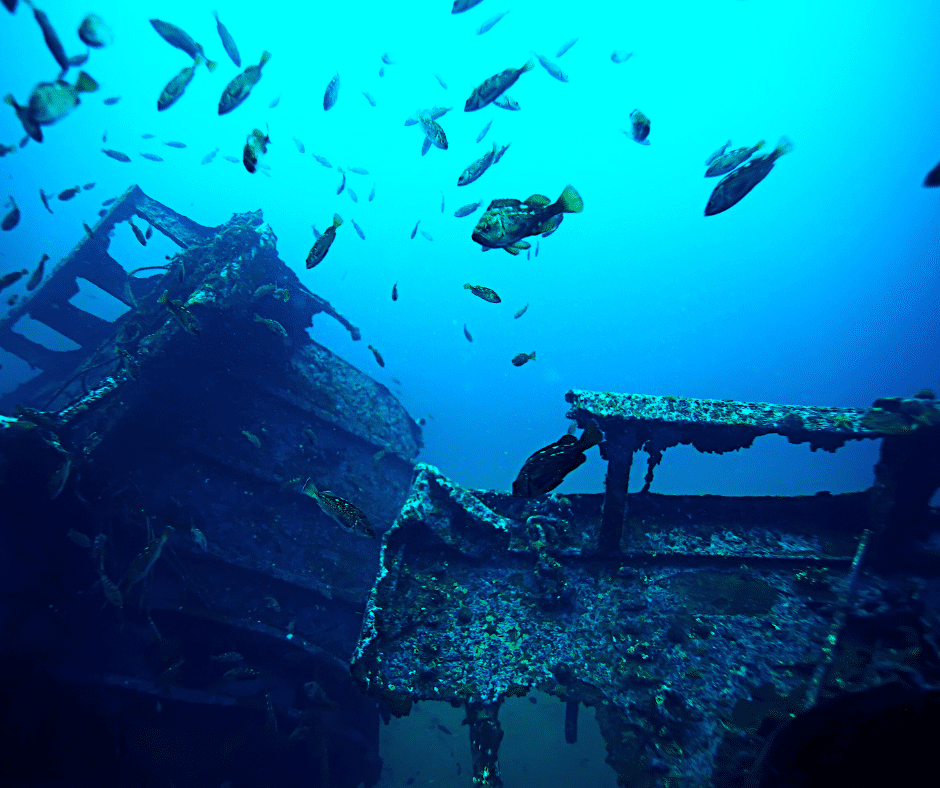There’s a certain magic to shipwreck diving. It’s that moment when the shadowy outline of a vessel appears in the gloom, and you realize you’re the first person to lay eyes on it in decades. You feel a connection to the past, a sense of awe, and maybe even a little bit of reverence. It’s an experience that stays with you long after you surface. But it’s also a demanding one, requiring expertise and a commitment to safety. At Double Action Dive Charters, we share that passion, and we’re dedicated to making your wreck diving dreams a reality. Join us on this journey as we explore more about wreck diving, what sets it apart, and finding the best charter to take you there.
The Allure of Wreck Diving: A Journey Through Time
The Great Lakes boast a rich maritime history, and their depths hold a vast collection of shipwrecks, each with its own captivating story.
- Historical Significance: These wrecks are time capsules, offering glimpses into past eras of shipping, transportation, and industry. Exploring them allows divers to connect with the lives of sailors, passengers, and the communities that relied on these vessels.
- Unique Underwater Ecosystems: Over time, shipwrecks become artificial reefs, providing habitat for a variety of marine life. Fish, invertebrates, and algae colonize the structures, creating vibrant and diverse underwater ecosystems.
- Photography and Exploration: Wreck diving provides unparalleled opportunities for underwater photography and exploration. Divers can capture stunning images of historical artifacts, intricate ship structures, and the fascinating interplay of history and nature.
Wreck Diving Considerations: What Makes it Different?
Wreck diving presents unique challenges and requires specific considerations compared to recreational reef diving.
- Depth and Conditions: Many Great Lakes shipwrecks lie in deeper waters, requiring advanced certification and experience. Divers may encounter colder temperatures, reduced visibility, and stronger currents.
- Navigation and Orientation: Navigating within and around a shipwreck requires specialized skills and tools. Divers often use reels and compasses to maintain orientation and avoid getting lost.
- Potential Hazards: Wreck diving involves inherent risks, including entanglement in debris, silt-outs that reduce visibility to zero, and the possibility of structural instability within the wreck.
Choosing the Right Dive Charter for Wreck Exploration
Selecting a reputable and experienced dive charter is paramount for a safe and rewarding wreck diving experience. Here’s what to look for:
- Boat Capabilities: The dive boat should be adequately sized and stable to handle the conditions on the Great Lakes. It should have ample deck space for gear preparation and diver comfort, as well as easy entry and exit points, such as a sturdy dive ladder.
- Navigation and Safety Equipment: The charter boat must be equipped with advanced navigation and safety equipment, including GPS, sonar to locate wrecks, oxygen delivery systems, and comprehensive first-aid supplies.
- Crew Experience and Knowledge: The captain and dive crew should have extensive experience in Great Lakes wreck diving. They should be knowledgeable about the local wreck sites, currents, weather patterns, and potential hazards. They should also be skilled in emergency procedures and diver assistance.
- Support for Technical Diving: If you’re interested in technical wreck diving, ensure the charter can support your needs, such as providing gas blending facilities, rebreather support, and technical dive guides.
- Double Action Dive Charters: Double Action Dive Charters offers a wealth of experience and expertise in Great Lakes wreck diving. Our vessels are equipped with the necessary safety features, and our crew is dedicated to providing a safe, enjoyable, and educational experience for divers of all levels.
Preparing for Your Wreck Dive Adventure
Proper preparation is key to a successful and safe wreck diving expedition.
- Diver Certification and Experience: Ensure you have the appropriate certification level and experience for the specific wreck sites you plan to explore. Many deeper or more complex wrecks require advanced or technical diving certifications.
- Gear Considerations: Consider using specialized gear for wreck diving, such as:
- Dive lights: To illuminate the interior of wrecks and explore dark areas.
- Reels and lines: For navigation and to prevent getting lost inside wrecks.
- Dive computers: With advanced features for multi-level diving and decompression monitoring.
- Wreck Research: Before your dive, research the history, layout, and any known hazards of the wreck you will be exploring. This will enhance your understanding and appreciation of the site.
- Dive Planning: Plan your dive carefully, including your dive profile, gas management, and emergency procedures. Discuss the dive plan thoroughly with your buddy and the dive crew.
- Setting Dive Goals: Define your goals for the dive, whether it’s to explore a specific area of the wreck, take photographs, or simply enjoy the experience.
Dive into History, Dive Responsibly
Wreck diving in the Great Lakes offers an unforgettable opportunity to explore history, witness unique underwater ecosystems, and push your diving skills. However, it’s crucial to prioritize safety, respect these historical sites, and choose a reputable dive charter that can provide the necessary support and expertise.
Double Action Dive Charters invites you to embark on a wreck diving adventure and discover the captivating stories hidden beneath the waves. Contact us today to plan your trip and experience the thrill of exploring the Great Lakes’ underwater museums.

